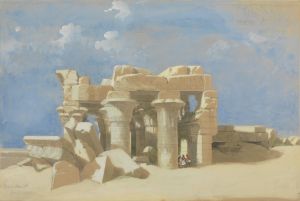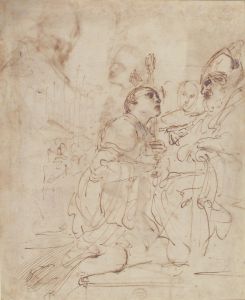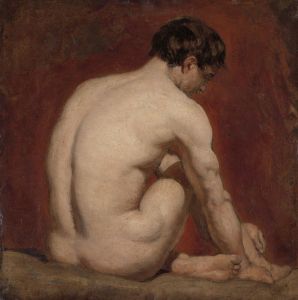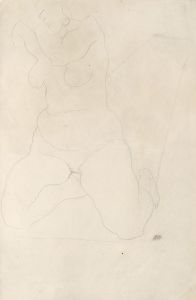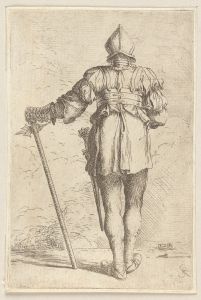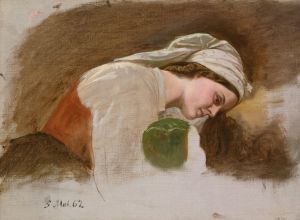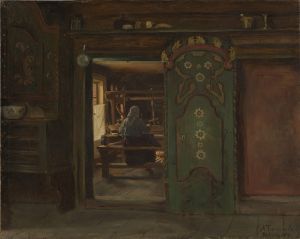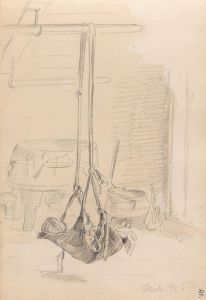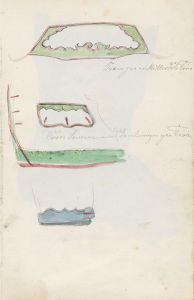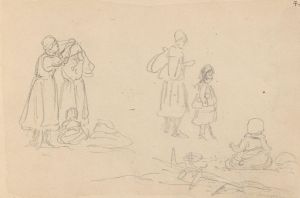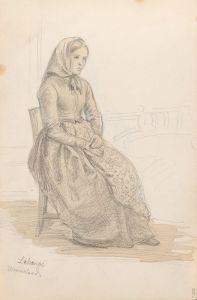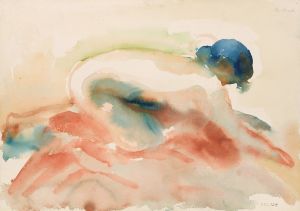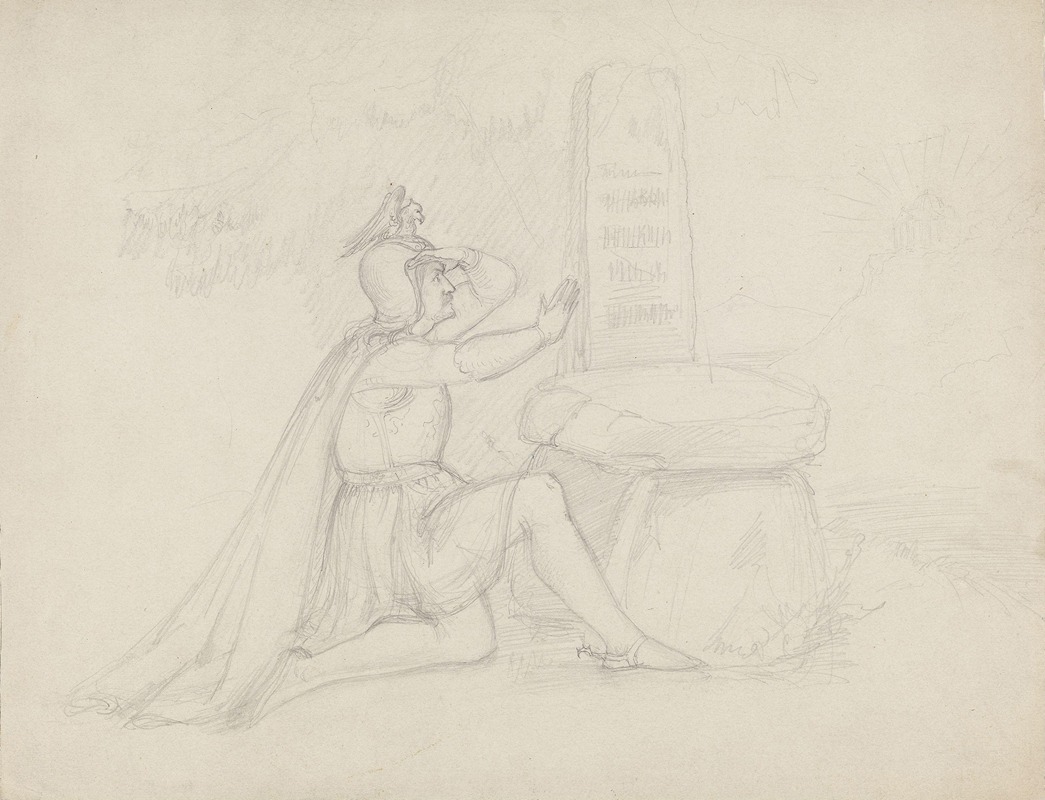
Mann med hjelm, knelende ved bautasten
A hand-painted replica of Adolph Tidemand’s masterpiece Mann med hjelm, knelende ved bautasten, meticulously crafted by professional artists to capture the true essence of the original. Each piece is created with museum-quality canvas and rare mineral pigments, carefully painted by experienced artists with delicate brushstrokes and rich, layered colors to perfectly recreate the texture of the original artwork. Unlike machine-printed reproductions, this hand-painted version brings the painting to life, infused with the artist’s emotions and skill in every stroke. Whether for personal collection or home decoration, it instantly elevates the artistic atmosphere of any space.
Adolph Tidemand (1814–1876) was a prominent Norwegian painter known for his contributions to the Romantic Nationalism movement in Norway during the 19th century. His works often depicted Norwegian folk life, traditions, and historical themes, reflecting a deep interest in the cultural identity of his homeland. One of his lesser-known works is "Mann med hjelm, knelende ved bautasten" (translated as "Man with Helmet, Kneeling by a Standing Stone").
This painting portrays a man wearing a helmet, kneeling beside a standing stone, or "bautasten," which is a type of ancient monument commonly associated with the Viking Age and earlier periods in Scandinavian history. Standing stones were often erected as memorials or markers, and they hold significant cultural and historical importance in Norway. The scene in the painting suggests a moment of reflection or reverence, possibly tied to themes of heritage, memory, or spirituality.
Tidemand's artistic style is characterized by meticulous attention to detail and a strong narrative quality. In this work, he employs a realistic approach to depict the figure and the surrounding environment, emphasizing the solemnity of the moment. The use of light and shadow enhances the emotional depth of the scene, drawing the viewer's attention to the central figure and the bautasten.
While "Mann med hjelm, knelende ved bautasten" is not as widely recognized as some of Tidemand's other works, such as "Haugianerne" or "Brudeferd i Hardanger" (the latter painted in collaboration with Hans Gude), it reflects his ongoing interest in exploring Norway's historical and cultural roots. The painting aligns with the broader Romantic Nationalist movement, which sought to celebrate and preserve national identity through art, literature, and music.
As with many of Tidemand's works, this painting is likely informed by his extensive travels throughout Norway, during which he studied local customs, costumes, and landscapes. These journeys provided him with the inspiration and material for his art, allowing him to create works that resonated deeply with the Norwegian public.
Further details about the specific context or commission of "Mann med hjelm, knelende ved bautasten" are not readily available. However, the painting remains an example of Tidemand's dedication to portraying themes of Norwegian history and identity with authenticity and emotional resonance.






